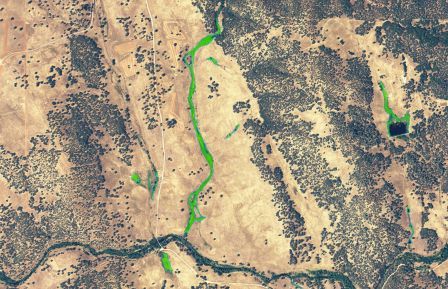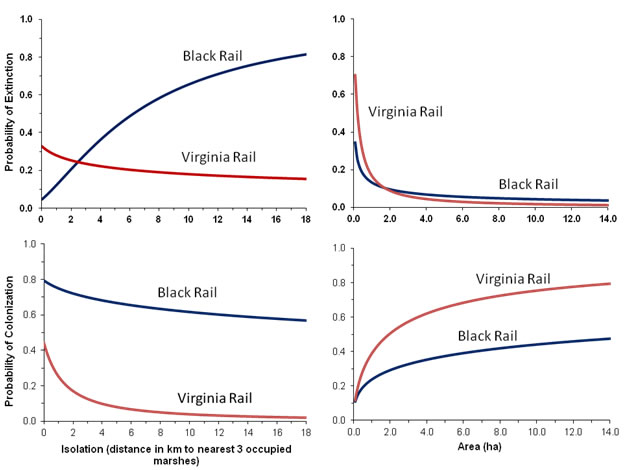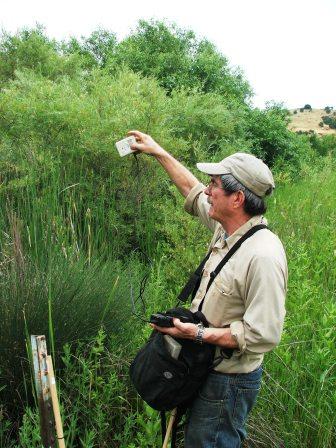|
|
 |
|
|
Metapopulation Ecology |
 |
 |
|
RESEARCH APPROACH
A metapopulation is a “population of populations” distributed in discrete habitat patches that are linked by occasional dispersal. Rather than track individual organisms through time, a metapopulation approach tracks the occupancy of habitat patches through time. Metapopulation models can be used to examine factors that cause patch colonizations or patch extinctions. New models also allow for estimating occupancy for organisms that are difficult to detect, as is the case with the highly secretive Black Rail. Black Rails in the Sierra foothills occupy small, discrete wetland patches and are thought to be resident year-round.
|
 |
|
|
 |
 |
 |
|
We collect data on Black Rail occupancy using call-playback surveys over successive years. Surveys are conducted from 30 mins before sunrise until three hours after sunrise, and from three hours before sunset until 30 mins after sunset. These periods have been found to have the greatest chance of detecting Black Rails.
During surveys we play taped rail calls that we recorded right here in the foothills and listen for a vocal response from the rails. Surveys end at a site either when a Black Rail calls back to the tape and is confirmed, or the entire marsh is surveyed. When rails are not detected, we return to sites up to three times within a year. We have found that three visits yield a 99% chance of detecting a rail if it is present at a site.
|
 |
 |
|
Here Jerry Tecklin conducts a call-playback survey at Slicks Canyon at the Sierra Foothill Research and Extension Center.
|
|
|
 |
 |
|
Finally, we use the occupancy data from the playback surveys and wetland environmental data to examine how factors such as wetland size, isolation, habitat quality and disturbance influence wetland colonizations and extinctions using metapopulation models.
|
 |
 |
|
WHAT WE HAVE LEARNED
The figure below shows that with increased isolation between wetland patches the local extinction of Black Rails from patches increases while isolation has little effect on extinction of Virginia Rails from patches. Increasing area (patch size) appears to decrease extinction for both species. We also see that as area increases the probability of colonization of wetland patches increases for both species, and as isolation increases the probability of colonization decreases slightly for both species.

It turns out that Rails are very sensitive to wetland area and isolation. The smaller a wetland patch is, the greater the chances that it will “wink out,” or become locally extinct, in a given year. Conversely, the larger a patch is, the less likely that it will wink out. Patches that are very isolated (far from other wetlands) are less likely to become colonized and are also more likely to go locally extinct. So what does this mean for management? Large wetlands that are well-connected to other patches are of greater conservation value than small and isolated patches.
|
|


